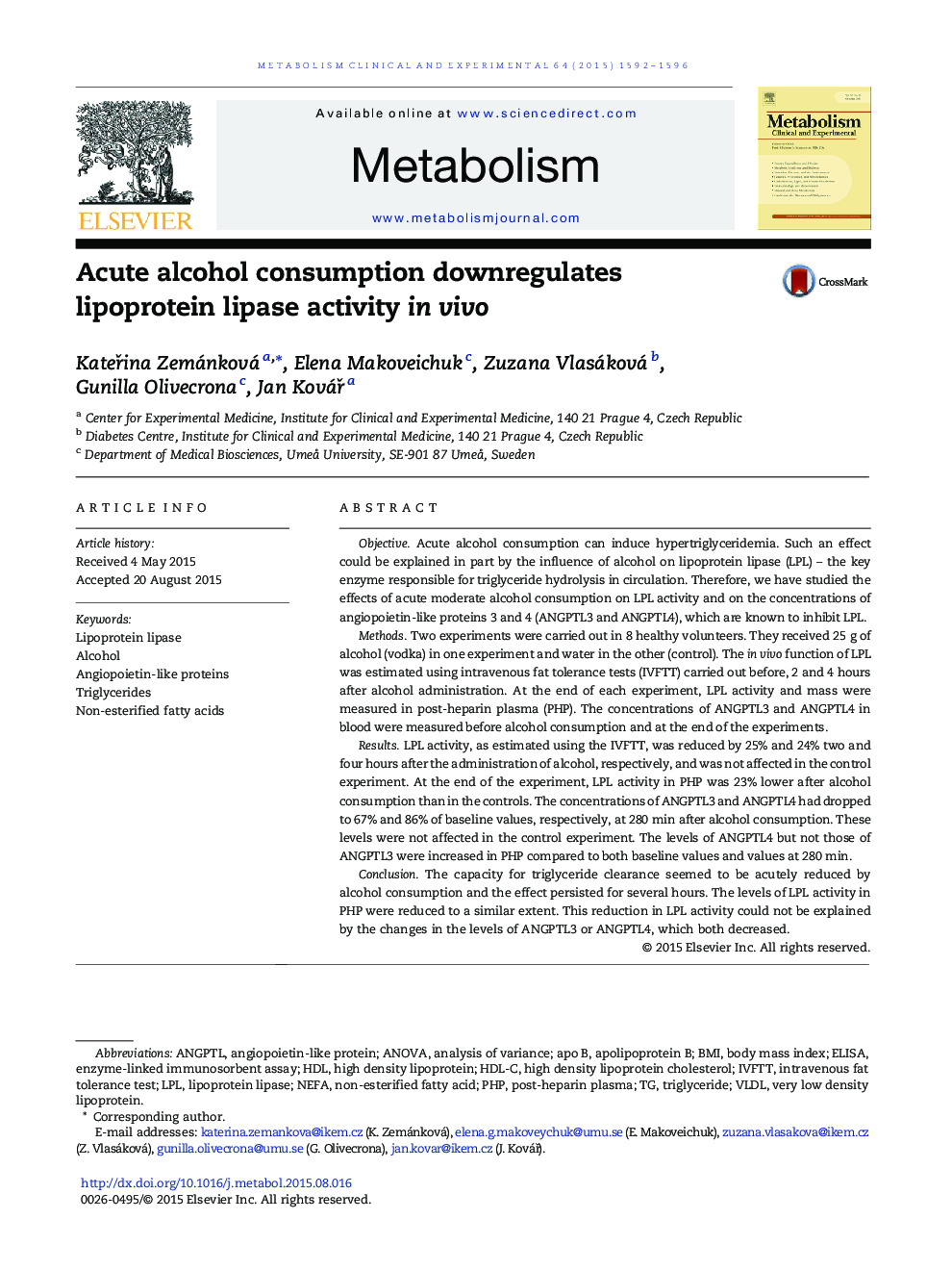| کد مقاله | کد نشریه | سال انتشار | مقاله انگلیسی | نسخه تمام متن |
|---|---|---|---|---|
| 2805386 | 1157045 | 2015 | 5 صفحه PDF | دانلود رایگان |
ObjectiveAcute alcohol consumption can induce hypertriglyceridemia. Such an effect could be explained in part by the influence of alcohol on lipoprotein lipase (LPL) – the key enzyme responsible for triglyceride hydrolysis in circulation. Therefore, we have studied the effects of acute moderate alcohol consumption on LPL activity and on the concentrations of angiopoietin-like proteins 3 and 4 (ANGPTL3 and ANGPTL4), which are known to inhibit LPL.MethodsTwo experiments were carried out in 8 healthy volunteers. They received 25 g of alcohol (vodka) in one experiment and water in the other (control). The in vivo function of LPL was estimated using intravenous fat tolerance tests (IVFTT) carried out before, 2 and 4 hours after alcohol administration. At the end of each experiment, LPL activity and mass were measured in post-heparin plasma (PHP). The concentrations of ANGPTL3 and ANGPTL4 in blood were measured before alcohol consumption and at the end of the experiments.ResultsLPL activity, as estimated using the IVFTT, was reduced by 25% and 24% two and four hours after the administration of alcohol, respectively, and was not affected in the control experiment. At the end of the experiment, LPL activity in PHP was 23% lower after alcohol consumption than in the controls. The concentrations of ANGPTL3 and ANGPTL4 had dropped to 67% and 86% of baseline values, respectively, at 280 min after alcohol consumption. These levels were not affected in the control experiment. The levels of ANGPTL4 but not those of ANGPTL3 were increased in PHP compared to both baseline values and values at 280 min.ConclusionThe capacity for triglyceride clearance seemed to be acutely reduced by alcohol consumption and the effect persisted for several hours. The levels of LPL activity in PHP were reduced to a similar extent. This reduction in LPL activity could not be explained by the changes in the levels of ANGPTL3 or ANGPTL4, which both decreased.
Journal: Metabolism - Volume 64, Issue 11, November 2015, Pages 1592–1596
